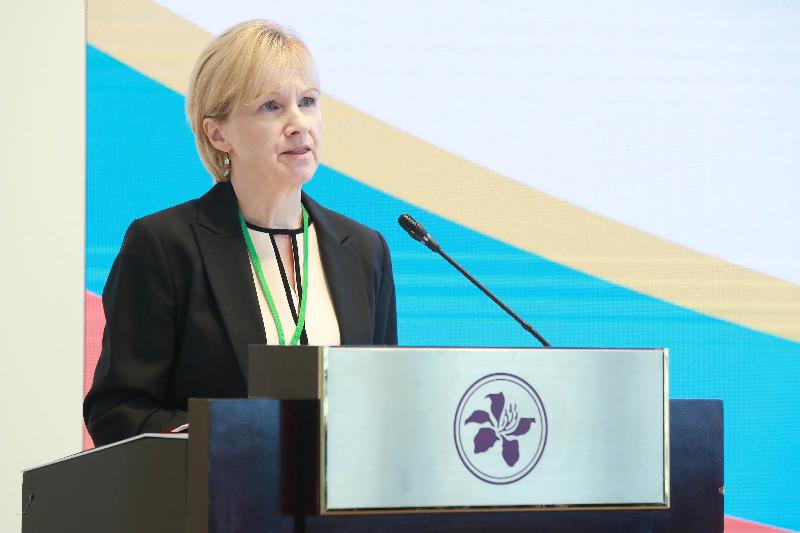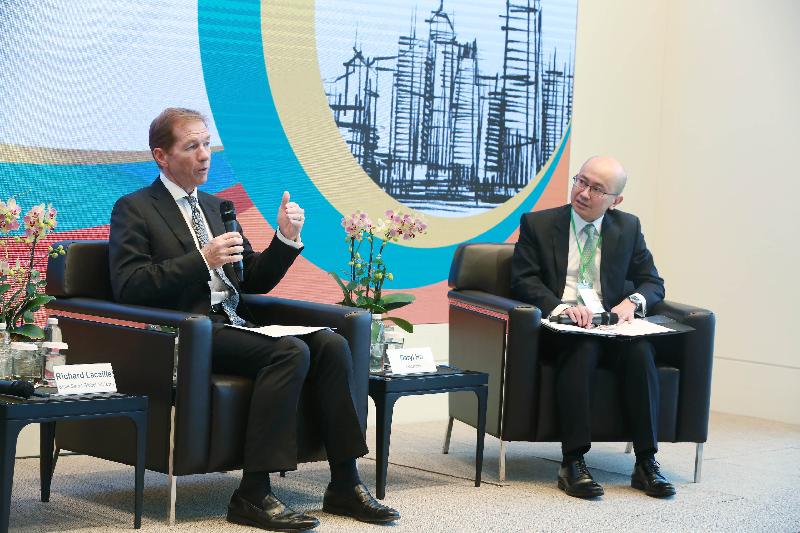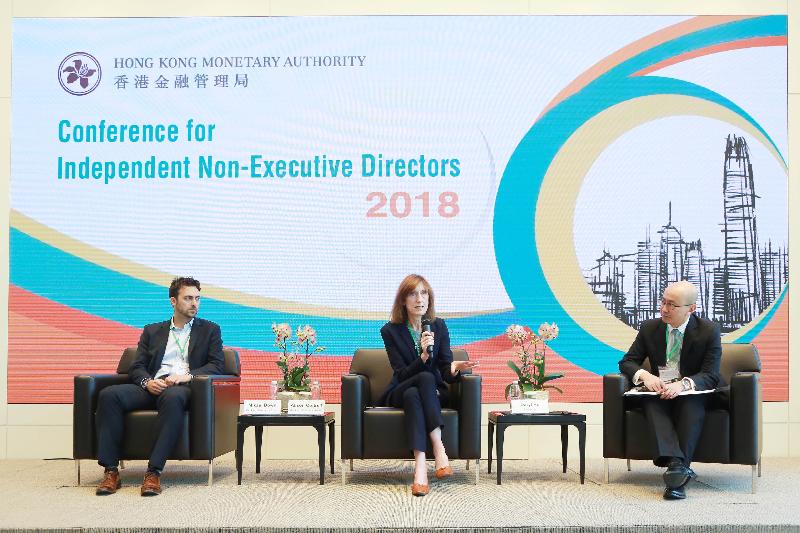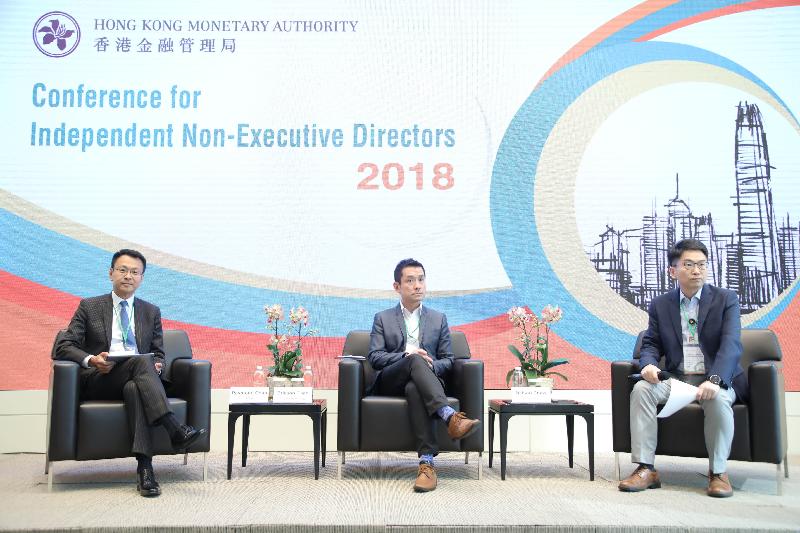September 2018 was marked by the ferocious strike of severe typhoon Mangkhut, which necessitated the issuance of the No. 10 Hurricane Signal in Hong Kong for 10 hours on September 16. This is the second longest duration of the No. 10 Hurricane Signal in Hong Kong since 1946, slightly less than the record of 11 hours set by Typhoon York in 1999. Due mainly to the rainfall brought by Mangkhut, the month was wetter than usual. The monthly rainfall was 383.3 millimetres, about 17 per cent above the normal figure of 327.6 millimetres in September. The accumulated rainfall recorded in the first nine months of the year was 1973.3 millimetres, a deficit of 12 per cent compared to the normal figure of 2233.1 millimetres for the same period. The month was also hotter than usual with a mean temperature of 28.0 degrees, 0.3 degrees above the normal figure of 27.7 degrees.
Under the influence of a trough of low pressure, the weather in Hong Kong was mainly cloudy with occasional heavy showers and thunderstorms on September 1. More than 30 millimetres of rainfall were recorded over most parts of the territory, and rainfall even exceeded 70 millimetres over Sai Kung and Cheung Chau. With the trough of low pressure weakening gradually, there were sunny periods and a few showers on September 2 and 3. An anticyclone above southern China brought generally fine weather to the territory on September 4.
Under light wind conditions, it was very hot with sunny periods from September 5 to 7. High temperatures also triggered thundery showers in the afternoon over Sai Kung and parts of the New Territories in these few days. As a cold front moved across southern China on the night of September 7, local weather became mainly cloudy with some showers on September 8. More than 20 millimetres of rainfall were recorded over parts of the urban areas, and rainfall even exceeded 40 millimetres at Happy Valley. The northeast monsoon associated with the cold front brought a few showers and slightly cooler weather to Hong Kong from September 8 to 10.
An area of low pressure over the Luzon Strait intensified into a tropical storm and was named Barijat on September 11. It moved westwards across the northern part of the South China Sea the next day. Barijat then moved across the Leizhou Peninsula and weakened gradually on September 13, later dissipating over inland Guangxi. Under the influence of the outer subsiding air of Barijat, the weather in Hong Kong was generally fine on September 11. Local weather became showery and windier on September 12, when Barijat skirted past to the south of Hong Kong. With winds subsiding gradually, apart from a few showers at first, there were sunny periods on September 13.
Super Typhoon Mangkhut tracked northwestwards over the western North Pacific on September 14 and made landfall over Luzon in the early hours of September 15. After crossing the northern part of Luzon, Mangkhut continued to track northwestwards quickly across the northern part of the South China Sea on September 15, edging towards the coast of Guangdong. Mangkhut weakened into a severe typhoon on the morning of September 16 and skirted about 100km south-southwest of Hong Kong in the afternoon. It made landfall over the vicinity of Taishan of Guangdong before dusk and moved into the western part of Guangdong. Mangkhut degenerated into an area of low pressure over Guangxi on the night of September 17.
The outer subsiding air of Mangkhut brought generally fine weather to Hong Kong on September 14 and 15. It was also very hot on September 15, with the temperature at the Hong Kong Observatory soaring to 35.1 degrees, the highest of the month and the second highest on record for September. With the approach of Mangkhut, local winds strengthened on the night of September 15. The weather in Hong Kong deteriorated rapidly during the passage of Mangkhut on September 16. The maximum 60-minute mean wind speeds recorded at Waglan Island and Cheung Chau were 161km/h and 157km/h respectively. Both are the second highest recorded at the corresponding stations. Moreover, the storm surge induced by Mangkhut resulted in an unusually high water level in many parts of Hong Kong. The water levels at Quarry Bay in Victoria Harbour rose to a maximum of 3.88 metres (above Chart Datum) on the afternoon of September 16, the second highest since 1954 and only lower than the record high of 3.96 metres (above Chart Datum) set by Super Typhoon Wanda in 1962. Furthermore, the maximum storm surge (above astronomical tide) induced by Mangkhut at Quarry Bay was 2.35 metres, breaking the previous record of 1.77 metres by Wanda in 1962. More than 100 millimetres of rainfall were generally recorded over Hong Kong, and rainfall exceeded 200 millimetres in parts of the territory that day. During the downpour, the temperature at the Hong Kong Observatory fell to a minimum of 23.6 degrees, the lowest in the month.
With Mangkhut departing from Hong Kong, local winds subsided gradually on September 17, but the outer rainbands associated with Mangkhut continued to bring squally showers to Hong Kong. The destructive storm to hurricane-force winds, severe storm surge and squally heavy rain associated with Mangkhut ravaged the territory and caused extensive damage to Hong Kong. There was serious flooding in many coastal and low-lying areas and substantial damage to coastal structures and buildings. Huge numbers of fallen trees and hundreds of smashed windows and glass-curtain walls were reported. Over 450 people were injured during the stormy weather. In addition, there were interruptions of water and power supply in some places. Traffic and transportation services were also seriously affected on September 16 and 17.
With the subtropical ridge extending westwards, apart from a few morning showers, local weather became fine during the day on September 18. The weather over Hong Kong remained generally fine and hot from September 19 to 22. Under light wind conditions, isolated thunderstorms triggered by high temperatures also brought more than 10 millimetres of rainfall to parts of the New Territories on the afternoon of September 23.
Under the influence of an easterly airstream, local weather became slightly cooler and mainly cloudy with occasional showers and thunderstorms on September 24 and 25. Showers were heavy on the morning of September 24, with more than 30 millimetres of rainfall generally recorded over the territory. Rainfall even exceeded 70 millimetres over Tai Po, Kwai Tsing and Kowloon. As the easterly airstream moderated gradually, local weather was marked by a mixture of sunshine and showers on September 26 and 27. Apart from one or two morning showers on September 28 and 29, the weather in Hong Kong became generally fine and dry towards the end of the month under the influence of the northeast monsoon.
Five tropical cyclones occurred over the South China Sea and the western North Pacific in September 2018.
Details of the issuance and cancellation of various warnings/signals in September are summarised in Table 1. Monthly meteorological figures and departures from normal for September are tabulated in Table 2.





